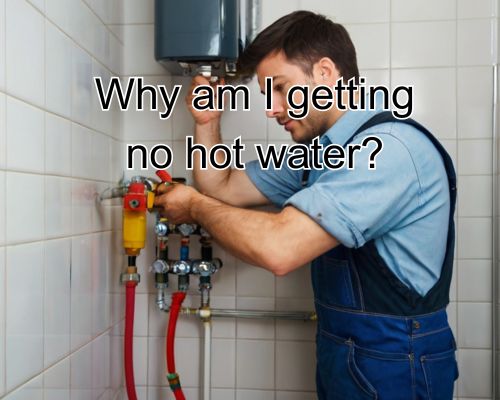Experiencing no hot water in your home can be a significant inconvenience and disrupt your daily routine.
Whether it’s a faulty thermostat, a gas leak, or a broken heating element, several common issues could be the culprit.
Checking these potential problems can help you quickly identify and fix the issue, ensuring your home has hot water again.

A key factor to consider is your water heater’s functionality.
For gas water heaters, issues like an extinguished pilot light or a gas supply problem might be to blame.
On the other hand, for electric water heaters, a malfunctioning thermostat or a faulty heating element could be the cause.
Both types of water heaters have a lifespan, and regular maintenance or timely replacement is essential to avoid unexpected failures.
Don’t overlook simple checks that can often resolve the problem quickly.
Ensure your thermostat is set to an appropriate temperature, and inspect for any water leaks or visible signs of damage around the heater.
By addressing these common issues, you can restore your hot water supply and maintain a comfortable living environment. Let us get to know more how to address this issue with Plumber Warragul.
Understanding Your Water Heater
When you experience no hot water in your home, it’s crucial to understand the type of water heater you have and common issues that can affect its performance.
Types of Water Heaters
There are various types of water heaters, each functioning differently.
Gas water heaters use a flame from natural gas to heat water stored in a tank.
Electric water heaters utilise heating elements powered by electricity.
Tankless water heaters heat water on demand and lack a storage tank, offering energy efficiency.
Similarly, traditional gas heaters with tanks keep a reserve of water heated and ready for use.
Electric heaters with tanks heat and store water until needed. Identifying your water heater helps diagnose problems accurately.
Common Reasons for No Hot Water
Several factors can cause your water heater to stop providing hot water.
A faulty heating element in an electric heater can fail to heat the water.
In gas water heaters, pilot light or ignitor issues can disrupt the heating process.
Sediment build-up in the tank can also impair heating performance, leading to cooler water temperatures.
Thermostat malfunctions can misregulate water temperature, leaving you with cold water.
For electric units, a tripped circuit breaker or blown fuse can cut power supply, stopping the heater from working.
For gas heaters, issues with the gas supply can hinder heating. Ensuring a steady gas flow or electrical connection is vital to maintain hot water.
Professional Inspection and Repair
If you are experiencing issues with no hot water, it may be time to contact a professional like Plumber Warragul, for inspection and repair. This section will provide guidance on when to reach out to experts and some tips for initial troubleshooting.
When to Contact a Professional
Severe water leaks or visible corrosion on the hot water system require immediate professional attention.
Gas leaks demand urgent action—never try to fix these yourself. Contacting a certified gas fitter or plumber is crucial.
If you hear unusual noises from the water heater or if the water temperature fluctuates between cold and lukewarm, call a professional.
Regular maintenance checks, typically annually, are vital.
A licensed plumber or electrician will inspect the pressure relief valve, thermocouple, gas valve, and other key components.
Hiring a qualified water heater technician ensures all issues are identified and repaired efficiently.
They can also determine if a complete system replacement is necessary. Avoid delaying professional help as it can lead to more costly repairs or unsafe living conditions.
DIY Troubleshooting Tips
Check the pilot light for gas systems. If it’s out, follow the manufacturer’s instructions to relight it.
For electric systems, verify the circuit breaker hasn’t tripped.
Inspect for water leaks around the tank, looking for signs of dampness or rust.
Check connections and drain valves for any dripping. If you detect a leak, turning off the water supply can prevent further damage until a professional arrives.
Flushing the tank can address sediment build-up causing lukewarm water. Use the manufacturer’s guidelines to flush the system safely.
Also, examining the thermostat settings and ensuring they are appropriately adjusted can resolve issues with inconsistent water temperature.
Remember, these DIY steps can help with minor issues, but always call a professional for major problems.